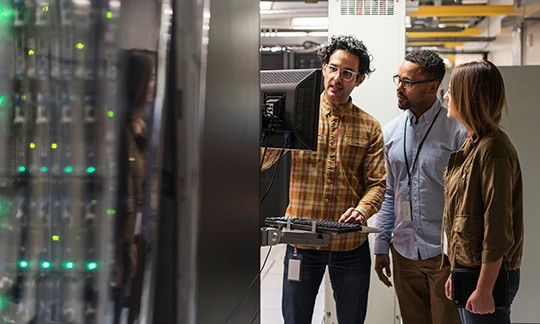
What does a good product data strategy look like?
BUSINESS INSIGHT
SEMICONDUCTOR | 4 MINUTE READ
Companies with advanced product data are outperforming those with limited strategies, seeing improvements in market share, employee productivity, and more.
Welcome to the product revolution, an era defined by the proliferation of smart products driving our lives and economies. These complex products rely on increasing amounts of software, computing, and connectivity, fueling higher standards of product design and pushing companies to transform their operational processes to remain competitive.
Companies with advanced product data strategies are outperforming those with limited strategies. Even though they see initial improvements in market share, employee productivity, innovation levels, and overall speed to market, they can still do more with their data.
Gone are the days where automotive OEMs take a couple of years for product development—the design timeline has accelerated to seven or eight months.
Gone are the days where automotive OEMs take a couple of years for product development—the design timeline has accelerated to seven or eight months.
“We are working on lean technologies and there are plenty of tools available to get the right path of development. We introduced accelerated testing, for example. The industry is evolving right now, and if you compare Tesla, or Rivian, or any other major automotive companies, they are following that agile data strategy to get better and better.”
But collecting data for its own sake is not enough. Data on its own has little value unless you know how to utilize and optimize it. And in some cases, a bad data strategy can be worse than none at all.
So, how do you build a good product data strategy?
1. Identify areas for improvement.
Whether at a corporate, organizational, or even lab level, securing collective agreement on which areas of your operation need to be improved is a critical first step.
2. Work backward to identify data sources.
Plan out the analysis needed to address the improvement vectors and then map the data needed to fuel your analytics tools. Find those data sources within your operations; if they do not exist, determine how you can make them available.
3. Implement a standardization strategy.
Agree on a set of processes, systems, software, and data formats for initial implementation. Consider scalability and flexibility and use your decisions to define a standardized solution architecture.
4. Build a product-centric data pipeline.
Invest in technology to create, collect, and store data, and convert it into insights. Be sure not to overlook test data—when combined with design, simulation, process, and other critical product data sources, it gives a complete end-to-end lifecycle view.
5. Analyze and act.
Implement data-driven change by processing data with the standardized solution architecture and designing collaborative workflows to use the insights.
6. Scale across the organization.
Use the standardization strategy as a catalyst for broader business impact. Identify areas of improvement and onboard new teams and data to grow your data-driven footprint in a structured, scalable, and connected way.
Despite the advantages of product data and analytics, many companies are still hesitating. Some have adequate process data yet lack the necessary product-centric data; others balk at the difficulty of mapping their datasets and the cost of integration across the lifecycle.
For those struggling to start, it can be helpful to segment the work into smaller, more manageable pieces. Creating a more advanced data strategy does not happen overnight, or even as a result of one big project. It is a continuous effort that transforms the company incrementally over time. So, to begin, after planning the initial stages of the data strategy, identify some “quick wins” to get the process started and build momentum.
“Our customers can easily be overwhelmed if they think they have to implement their data strategy in one big initiative,” says Ritu Favre, executive vice president and general manager of industry-specific business units at NI.
“We work with them to break down the process and identify more manageable issues they can tackle to build capability and show success. For some companies, that means building out the core data infrastructure and the capabilities to build a data pipeline. Other customers may be ready to add analytics to an existing infrastructure. Every company needs to assess their current state to identify the best way to make progress.”
Learn more about unlocking the full value of your product data.


